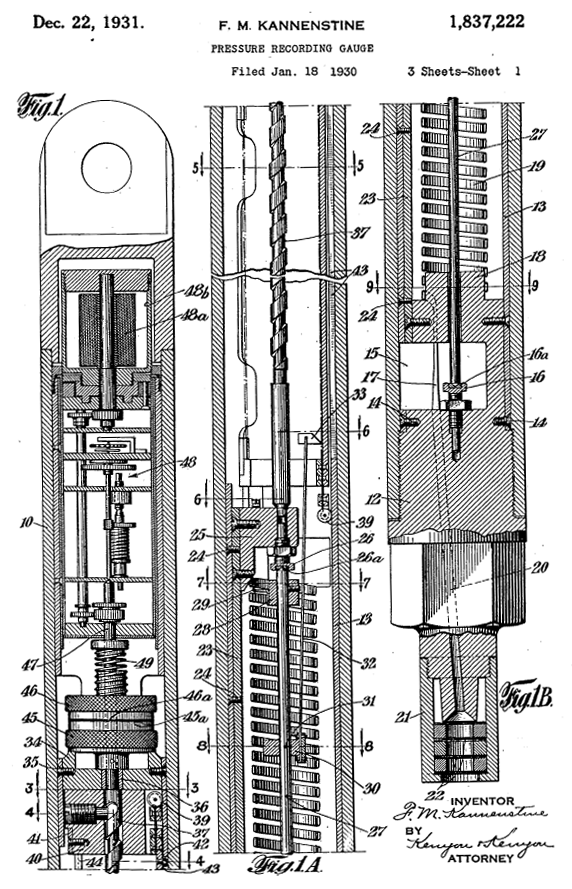Computatest
High Pressure and Temperature Surveys
History of the Amerada® Pressure Gauge
“Those who cannot remember the past are condemned to
repeat it.”
The Life of
Reason by George Santayana
Extracted
from
the document by Charles V. Millikan, Chief Production
Engineer, Amerada Petroleum Co. and Carroll V. Sidwell,
Production Engineer, Amerada Petroleum Co. in
Transactions of the AIME Volume 92, Number 1, Pages 194-205,
and dated December 1931.
Bottom-hole Pressures in
Oil Wells
There is nothing more important in petroleum engineering than a definite knowledge of the pressure at the bottom of an oil well at any existing operating condition, and the relation of this pressure to the pressure within the producing formation. A knowledge of bottom-hole pressures is fundamental in determining the most efficient methods of recovery and the most efficient lifting procedure, yet there is less information about these pressures than about any other part of the general problem of producing oil.
Determination of Bottom-hole Pressures
Bottom-hole pressure may be calculated or determined by several methods. On an inactive well it may be calculated from the fluid head or, if the well is shut in, by adding the casinghead pressure, the static head of the gas and the fluid head. In wells flowing naturally through tubing the pressure at the bottom of the tubing may be calculated by adding the pressure at the casinghead between the tubing and the casing and the pressure due to the weight of the column of gas, but there is always possibility of error caused by fluid being in the annular space above the bottom of the tubing. If a well with tubing is flowing through either the annular space or the tubing, sufficient gas may be injected through the static space to insure that it is free of fluid but not sufficient to establish an appreciable friction loss. The pressure at the bottom of the tubing can then be calculated by adding to the pressure at the tubing head the pressure due to the weight of the column of gas. This is probably the most accurate method of calculating bottom-hole pressures. In wells flowing by gas-lift, the pressure at the point the gas enters the flow may be calculated by a gas-flow formula.
Several types of pressure bombs have been used to measure the pressure at the bottom of wells. One is a piece of steel tubing with a check valve in the bottom and a connection for a pressure gage at the top.
The US Patent 1837222 A is by inventor Fabian M. Kannenstine and assigned to Geophysical Research Corp. Application January 18, 1930.

The US Patent 1998996 A is by inventors Reginald J. S. Pigott, and George W. Rusler.
Gulf Research & Development Corporation,
Pittsburgh, PA., a corporation of Delaware.
Application November 29, 1932, Serial No. 644,860
-
Amerada is a registered trademark of Geophysical Research Corporation.

